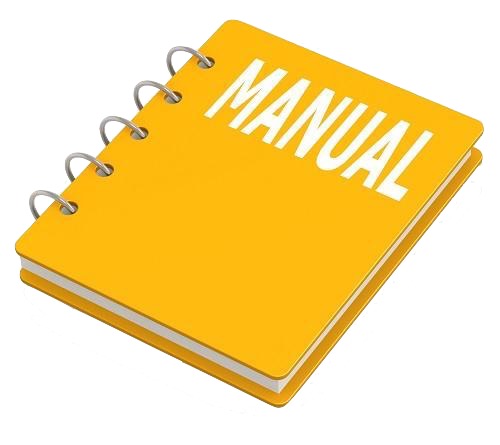INSTANT DOWNLOAD (add to cart)
Toyota Engines Workshop Repair & Service Manual
Complete digital official shop manual contains service, maintenance, and troubleshooting information for the Toyota Engines. Diagnostic and repair procedures are covered in great detail to repair, maintain, rebuild, refurbish or restore your engines like a professional mechanic in local service/repair workshop. This cost-effective quality manual is 100% complete and intact as should be without any missing pages. It is the same factory shop manual used by dealers that guaranteed to be fully functional to save your precious time.
This manual for Toyota Engines is divided into different sections. Each section covers a specific component or system and, in addition to the standard service procedures, includes disassembling, inspecting, and assembling instructions. A table of contents is placed at the beginning of each section. Pages are easily found by category, and each page is expandable for great detail. It is in the cross-platform PDF document format so that it works like a charm on all kinds of devices. You do not need to be skilled with a computer to use the manual.
FILELIST:
1KZ-T Engine Repair Manual
4A-F, 4A-GE Engine Repair Manual
7MGE, 7M-GTE Engine Repair Manual
1C, 2C, 2C-T Engine Repair Manual.pdf
1HD-FT Engine Repair Manual.pdf
1KZ-TE Engine Repair Manual.pdf
1PZ, 1HZ, 1HD-T Engine Repair Manual.pdf
2H, 12H-T Engine Repair Manual.pdf
2JZ-GE, 2JZ-GTE Engine Repair Manual.pdf
2L-T, 3L Supplement Engine Repair Manual.pdf
2L, 2L-T, 3L, 5L Engine Repair Manual Supplement (FR).pdf
2ZZ-GE Engine Repair Manual.pdf
3S-FE Engine Repair Manual.pdf
3ZZ-FE, 4ZZ-FE Engine Repair Manual.pdf
4A-F, 4A-GE Engine Repair Manual.pdf
B, 2B Engine Repair Manual.pdf
B, 3B, 11B, 13B, 13B-T Engine Repair Manual (’86).pdf
B, 3B, 11B, 13B, 13B-T Engine Repair Manual.pdf
B, 3B, 11B, 14B Engine Repair Manual.pdf
F (97213) Engine Repair Manual.pdf
F (98087) Engine Repair Manual.pdf
L, 2L, 2L-T Engine Repair Manual.pdf
Taro 2L 2.4ltr. Diesel Engine Repair Manual.pdf
Taro 2Y_4Y 1.8-2.2ltr. Engine Repair Manual.pdf
EXCERPT:
ENGINE MECHANICAL – Cylinder Block
PREPARATION FOR DISASSEMBLY
1. (M/T)
REMOVE CLUTCH COVER AND DISC
2. (M/T)
REMOVE FLYWHEEL
3. (A/T)
REMOVE DRIVE PLATE AND FLYWHEEL
Remove the drive plate rear spacer, drive plate and flywheel.
4. REMOVE REAR END PLATE
Remove the bolt, end plate and dust cover.
5. INSTALL ENGINE TO ENGINE STAND FOR
DISASSEMBLY
6. REMOVE TIMING BELT AND PULLEYS
(See page EM-33)
7. REMOVE CYLINDER HEAD (See page EM-55)
8. REMOVE WATER PUMP (See page CO-6)
9. REMOVE ALTERNATOR
10. REMOVE TIMING GEARS (See page EM-43)
11. REMOVE INJECTION PUMP (See page FU-27)
12. REMOVE OIL PAN AND TIMING GEAR CASE (OIL PUMP)
(See page LU-8)
13. REMOVE OIL COOLER (See page LU-14)
14. REMOVE WATER INLET AND THERMOSTAT
15. REMOVE ENGINE MOUNTING
DISASSEMBLY OF CYLINDER BLOCK
(See page EM-84)
1. REMOVE REAR OIL SEAL RETAINER
Remove the six bolts and retainer.
2. CHECK CONNECTING ROD THRUST CLEARANCE
Using a dial indicator, measure the thrust clearance while moving the connecting rod back and forth.
Standard thrust clearance: 0.10-0.20 mm
(0.0038-0.0079 in.)
Maximum thrust clearance: 0.30 mm (0.0118 in.)
If the thrust clearance is greater than maximum, replace the connecting rod assembly. If necessary, replace the crankshaft.
3. REMOVE CONNECTING ROD CAPS AND CHECK OIL
CLEARANCE
(a) Using paint, place the matchmarks on the connecting rod and cap to ensure correct reassembly.
(b) Using SST, remove the connecting rod cap bolts.
SST 09011-381 21
(c) Using the removed connecting rod cap bolts, pry the connecting rod cap back and forth, and remove the connecting cap.
HINT: Keep the lower bearing inserted with the connecting rod cap.
(d) Clean crank pin and bearing.
(e) Check the crank pin and bearing for pitting and scratches.
If the crank pin or bearing is damaged, replace the bearings.
If necessary, grind or replace the crankshaft.
(f) Lay a strip of Plastigage across the crank pin.
(g) Install the connecting rod cap.
(See step 8 on page EM-111)
Torque: 1st 375 kg-cm (27 ft-lb, 37 Nm)
2nd turn 90°
HINT: Do not turn the crankshaft.
(h) Remove the connecting rod cap.
(See procedure (b) and (c) above)
(i) Measure the Plastigage at widest point.
…
